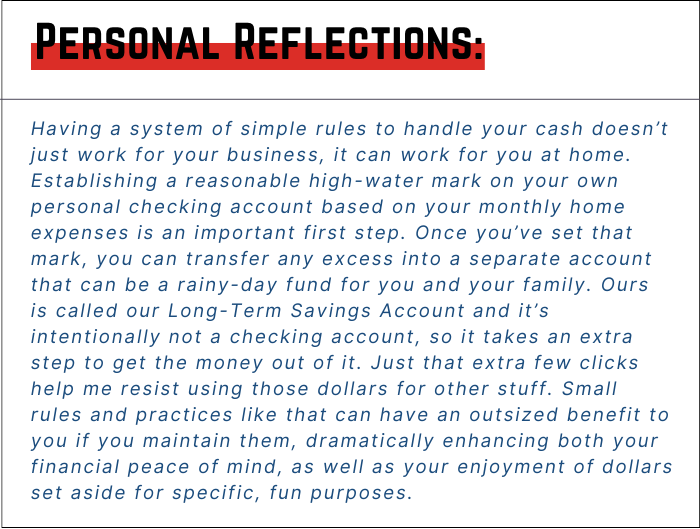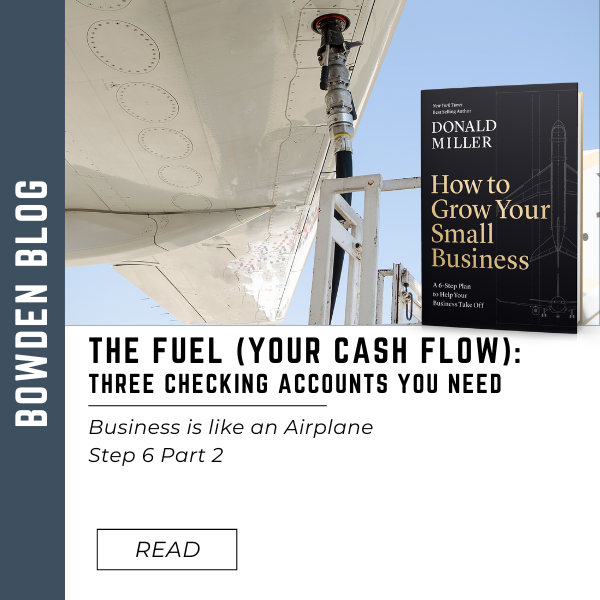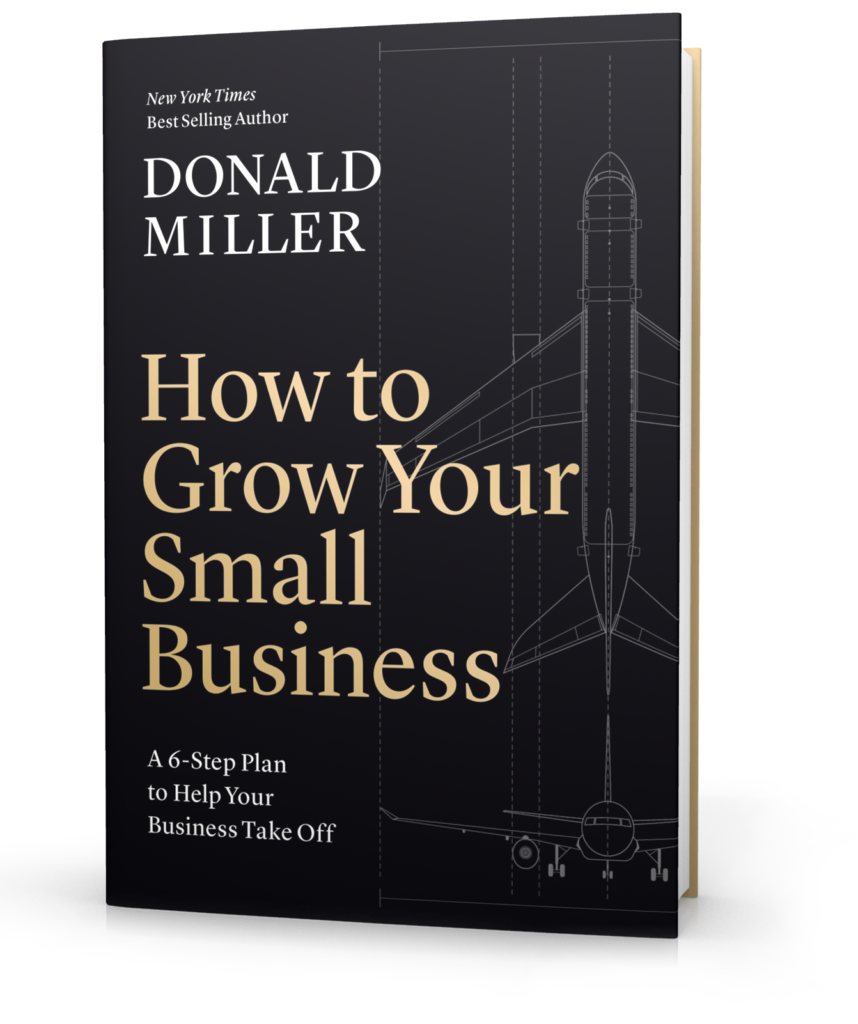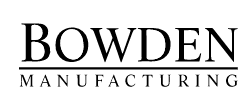As a small business owner, you may try to calculate your estimated taxes in your head and set aside money every quarter or so. This rarely works.
At the same time, it can be great to hear your accountant tell you that you made money last quarter, but if you’re wondering where that money went, it can be frustrating.
Having a method to make sure you’ve got money for taxes and that you can see the profit from your business will create peace of mind for you and allow you to see the benefits of owning your business.
In this Series, we’re reviewing the 6-Step Plan to run your business from Donald Miller’s latest book, How to Grow Your Small Business, and the online platform at businessmadesimple.com.
The analogy of an airplane helps describe the 6 Steps needed to run your business effectively and this week, we’re continuing with our final installment in Step 6, the Fuel, Your Cash Flow.
In this second part of Step 6, Don shares the methods by which you can allocate money consistently for taxes establish a spot to collect the profit your business generates.
After setting up the first three accounts as described in last week’s blog, you now need to establish the rhythms of cash flow that will help you keep the money in the right spots as you operate.
In larger businesses, these patterns may not feel as applicable, but the principles of the Playbook and their simplicity are still relevant and can help keep even a big company from encountering unexpected financial hardship. Establishing clear practices around managing cash to set aside profit and tax dollars as a part of the Small Business Cash Flow Playbook will ensure the financial state of your business remains visible, with profit and tax dollars set aside for future use.
Setting Aside Money for Taxes
You’ve established the three core accounts of the playbook to operate your business (Operating Account, Personal Checking Account, and Tax Account). You’ve set up an automatic transfer of your salary from the Operating Account to your Checking Account to keep your money separated from the business’s money. To properly set aside money for taxes, the Playbook introduces a straightforward solution to covering your tax payments. For every dollar you transfer into your Checking Account, transfer the same amount to your Tax Account. By mirroring these transfers, your business will always be ready for tax obligations, eliminating last-minute scrambles and potential penalties.
You can argue that different tax rates in various regions alter the amount that will actually be needed for tax obligations, but the rule of thumb advised in the Playbook is conservative and should be slightly more than sufficient. This additional cushion will also provide a psychological bonus when you see that you’ve got a surplus in your Tax Account after making your tax payments. The pleasant surprise of extra dollars will make your tax situation a favorable one, rather than the typical stressful situation.
Accumulating Business Profit
Once the three main accounts are set up, the fourth account to establish is the Profit Account. The Playbook is designed to help you prioritize the accumulation of business profit through each month and year your business operates.
The Boil Over Approach
Your Operating Account should be accumulating money as you produce and sell your products and services at a profit. It will slowly increase and typically, your comfort level with the financial status of your business becomes based on the balance in that account.
The Playbook guides you to set a high-water mark for the Operating Account that is roughly equivalent to one month of your business’s overhead costs in order to easily identify excess funds that have accumulated. Once the balance reaches that preset mark, the surplus dollars are transferred equally to the Profit Account and the Tax Account. Moving these dollars out of your Operating Account ensures they are not inadvertently spent.
Splitting the transfer between the Profit Account and the Tax Account will ensure that your business has cash set aside for tax purposes.
The Profit Account – Your Rainy-Day Fund
Your Profit Account acts as a financial safety net. The Playbook encourages you to build up your Profit Account until it reaches six months of operating expenses for your business.

With a cushion of that magnitude, your business will be able to weather unforeseen financial challenges, whether a market downturn or unexpected operational costs.
Final Thoughts
Step 6 from Donald Miller’s book, How to Grow Your Small Business, is the Fuel – Your Cash Flow. We’ve discussed the Small Business Cash Flow Made Simple Playbook, a process to run your business that helps you stay in control of your business finances.
business that helps you stay in control of your business finances.
We’ve discussed the importance of setting aside money for taxes by matching all your owner’s salary transfers by making identical transfers to your Tax Account. Having dollars set aside for taxes takes a huge potential burden off your business when tax payments are due.
Next, we discussed setting up the fourth bank account, the Profit Account, and setting a high-water mark in your Operating Account equal to one month’s operating expenses. Any dollars above that mark are split and transferred to your Profit Account and your Tax Account. This both sets aside profits for future use and limits inadvertent spending from your Operating Account.
With an account dedicated to business profit, you can operate with the confidence that you’ve got a buffer against uncertainties, allowing you to make decisions from a position of financial strength.
Next week, we’ll move onto the next and final step of the Small Business Cash Flow Made Simple Playbook: how to use your business to establish financial wealth. You’ll see how accumulating profit over time and then using it constructively can set you up to provide the financial wealth and security you desire for yourself and your family.


